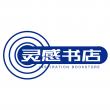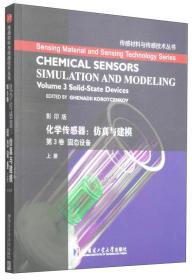
化学传感器:仿真与建模:第1卷:下册:金属氧化物的显微结构表征与建模
正版保障 假一赔十 可开发票
¥ 16.33 2.0折 ¥ 80 全新
库存142件
广东广州
认证卖家担保交易快速发货售后保障
作者Ghenadii Korotcenkov[主编]
出版社哈尔滨工业大学出版社
ISBN9787560349015
出版时间2015-01
装帧其他
开本其他
定价80元
货号8416187
上书时间2024-12-30
- 最新上架
商品详情
- 品相描述:全新
- 商品描述
-
目录
PREFACE
ABOUT THE EDITOR
CONTRIBUTORS
6 MODELING INTERACTION OF METAL OXIDE SURFACES WITH WATER
1 Introduction
2 Metal Oxide-Water Interactions and Their Study
2.1 General Oxide Properties and Surface Processes
2.2 Experimental Methods
2.3 Computer Simulations
2.4 Theoretical Models
3 Electronic Structure and Surface Reactions
3.1 TiO2
3.2 SnO2
3.3 ZnO
4 Thermodynamic and Structural Aspects of Adsorption
4.1 TiO2
4.2 SnO2
4.3 ZnO
5 Dynamics of Adsorbed Water
5.1 Fast Processes-Proton Motion
5.2 Slow Processes-Molecular Motion
6 Perspectives
7 Acknowledgments
References
7 DENSITY FUNCTIONAL THEORY STUDY OF WATER DISSOCIATVE CHEMISORPTION ON METAL OXIDE SURFACES
1 Introduction
2 Catalytic Water Dissociation on Metal Oxide Surfaces
2.1 Water Dissociative Chemisorption on Fe3O4(111) Surfaces
2.2 Water Dissociative Chemisorption on Rutile-TiO2(110) Surfaces
2.3 Water Dissociative Chemisorption on α-Al2O3(100) Surfaces
4 Summary
5 Acknowledgments
References
8 FIRST-PRINCIPLES STUDIES OF HYDROGEN SPILLOVER MECHANISMS ON METAL OXIDES
1 Introduction
2 General View of Spillover
2.1 Mechanism of Hydrogen Spillover on Metal Oxide
2.2 The Role of Noble Metals in the Spillover Effect
2.3 The Role of Spillover in Chemical Sensors
2.4 Experimental Confirmations of the Presence of Spillover Effect
3 Computational Approach
4 Hydrogen Spillover in MoO3
5 Hydrogen Spilloverin Al2O3
6 Hydrogen Spilloverin WO3
7 Summary
References
9 ADSORPTION AND DIFFUSION OF ADATOMS AND SMALL CLUSTERS ON METAL OXIDE SURFACES
1 Introduction
2 Theoretical Methods and Concepts in Metal/Oxide Interaction
2.1 Theoretical Methods
2.2 Concepts in Metal/Oxide Interaction
3 Diffusion of Isolated Adatoms
3.1 Energy Barriers for Isolated Adatoms on Flat MgO(001)
3.2 Long Jumps in Adatom Diffusion
3.3 Diffusion in the Presence of Defects
4 Diffusion of Dimers, Trimers, and Tetramers
4.1 Dimers
4.2 Trimers
4.3 Tetramers
5 Adsorption and Diffusion on Exotic (Ultrathin) Oxide Substrates
5.1 Adsorption
5.2 Diffusion
6 Conclusions
References
10 EFFECT OF SIZE ON THE PHASE STABILITY OF NANOSTRUCTURES
1 Introduction and Motivation
2 Phase Stability and Structural Phase Transition
2.1 Crystals and Crystalline Structures
2.2 Factors Triggering Phase Transitions
2.3 Size Effect on Phase-Transition Pressure and Temperature of Nanostructures
2.4 Research on the Thermodynamics of Solid Structural Nanophase Transitions
2.5 Effect of Surface: Surface Energy and Surface Stress
2.6 Effect of Shape on Phase Stability
3 Theoretical Methods for Size-Dependent Phase Stability
3.1 Simulation Techniques
3.2 Thermodynamics
3.3 Applications: Case Studies
4 Concluding Remarks
References
11 SEGREGATION-INDUCED GRAIN-BOUNDARY ELECTmCAL POTENTIAL IN IONIC OXIDE MATERIALS:SIMULATION APPROACHES AND PENDING CHALLENGES
1 Introduction: General Ideas About Segregation Effects in Oxide Materials
2 Modeling of Segregation to the Grain Boundaries: Analytical (or Continuum) Approach
3 Atomistic Approach: Molecular Dynamics Modeling
4 Mesoscopic Approach: Phase-Field Models
4.1 Topological Evolution of a Collective of Many Grains
4.2 Microstructural Evolution Coupled with Chemical Segregation
5 Pending Problems and Future Prospects
6 Acknowledgments
References
INDEX
内容摘要
科瑞特森科韦编著的《化学传感器--仿真与建模(第1卷金属氧化物的显微结构表征与建模下影印版)》内容包括,金属氧化物表面与水的Interactiong建模,在金属氧化物表面水的解离吸附作用的密度泛函理论研究,基于金属氧化物氢溢出机制的研究,在金属氧化物表面Adatoms小型集群的吸附和扩散,相位对稳定的纳米结构的影响,Segregation-Induced晶粒间电气潜在的离子氧化物材料:Simultion方法和悬而未决的挑战。建模,化学传感器的完美补充:传感材料和化学传感器的原理,综合传感器技术,目前对材料,技术,制造的详细信息,以及各种设备的化学传感应用化学传感器是。各种工业过程及公共安全,发动机性能,医疗等活动的日常监测的自动化和更多的积分。
相关推荐
— 没有更多了 —






















以下为对购买帮助不大的评价